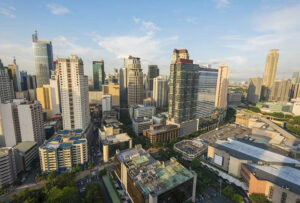THE SUSTAINED pace of economic expansion makes the Philippines one of Southeast Asia’s bright spots. Consumer spending slowed in 2024 but the tempering inflation as well as the implementation of interest rate cuts should provide a boost to the household expenditure-led Philippine economy. The Philippines should benefit from economic pump-priming activities to be facilitated by direct and spillover impacts of election spending this year.
Office leasing in Metro Manila continues to see challenges, but it is important to note that pre-leasing in Metro Manila office is back.
Lower interest rates should help raise appetite for more residential projects, especially for horizontal developments outside Metro Manila. Developers should continue offering attractive payment terms.
The retail segment remains strong, with foreign brands expanding across the country and mall operators reporting the consumer traffic now is even stronger than pre-pandemic footfall.
Q1 2025 GDP BELOW GOV’T FORECASTThe Philippine economy grew by 5.4% in Q1 2025, below the projections set by the government and private sector analysts. The government’s economic planning department said the Philippines needs to grow by an average of 6.2% in the next three quarters to meet the lower-end of the government’s target of a 6%-7% GDP growth.
Colliers believes that an accelerated economic expansion for the remainder of 2025 should help support the property sector’s growth.
CENTRAL BANK RESUMES RATE CUTS AS INFLATION REACHES FIVE-YEAR LOWThe Bangko Sentral ng Pilipinas (BSP) or central bank reduced its policy rate by 25 basis points (bps) to 5.5% in April as inflation continues to ease. Analysts are projecting that the central bank will likely reduce rates by another 50 bps for the remainder of the year and this should have a positive effect on household spending.
Meanwhile, inflation slowed for the fourth consecutive month in May at 1.3%, the lowest since the 1.2% in November 2019. Average inflation reached 1.9% as of 5M 2024, below the government-projected full-year target of between 2% and 4%. Tempered inflation should eventually result in lower interest rates and this should prop up consumer appetite for the remainder of the year.
RESIDENTIAL: THE SHIFT FROM HEADWINDS TO TAILWINDSThe Philippine property market has been seeing some green shoots of recovery the past few quarters. As we always highlight at Colliers Philippines, the residential market outside of Metro Manila records strong take up, especially in key localities such as Cebu, Bacolod, Iloilo, Davao, Pampanga, Bulacan, Cavite, and Laguna.
While the condominium market within Metro Manila sees challenges, developers have been very aggressive in offering ready-for-occupancy (RFO) promos and these have been lifting take up for units either for long-term lease or sale. The results of our most recent briefing polls indicate that the preference for condominium units has been picking up, indicating that the RFO promos being launched and offered by developers left and right are bearing fruit.
Colliers believes that it is not all doom and gloom for the Metro Manila residential market. Developers have been launching fewer pre-selling units as they remain aggressive in introducing new residential projects in competitive localities outside of the capital region. Recovery will focus around launching the ideal residential product at the right location with a viable price and favorable terms.
RETAIL: FASTER THAN EXPECTED RECOVERYIt is obvious that the Philippine retail sector is getting back to full health from the establishment of new foreign retail brands to the expansion of existing brands, there’s no doubt that physical mall space take up has been reverting to pre-covid levels, resulting in lower Metro Manila retail vacancy and recovery in lease rates, especially in the more established business hubs that are recording brisk recovery.
Colliers is projecting mall vacancy to revert to pre-covid level by end-2026, indicative of Filipinos’ rising propensity to shop inside physical malls.
More malls have been lined up for completion beyond 2025 and these will also be located in thriving localities outside of Metro Manila. This proves that foreign brands are keeping an eye on key cities for expansion outside the capital region.
To continue locking in retail opportunities, mall developers should ramp up efforts in offering refreshed retail spaces and explore the viability of housing more popular retail segments that also absorb humongous retail space, including brands from home furnishing and personal accessory segments.
Joey Roi Bondoc is the director and head of research of Colliers Philippines.
